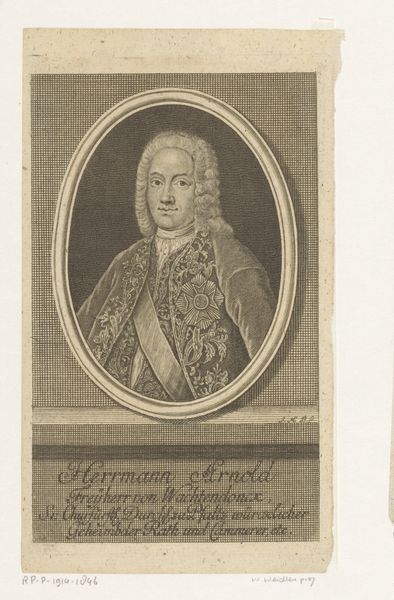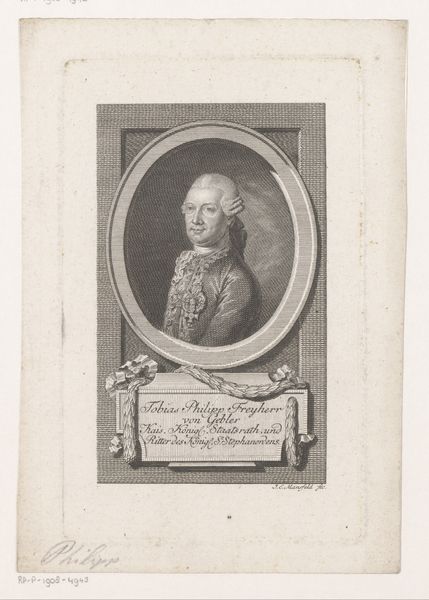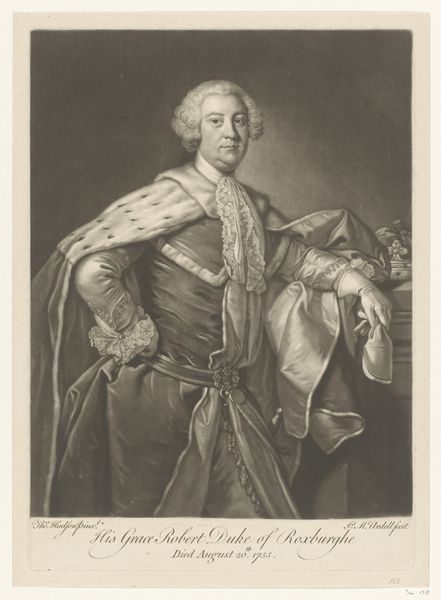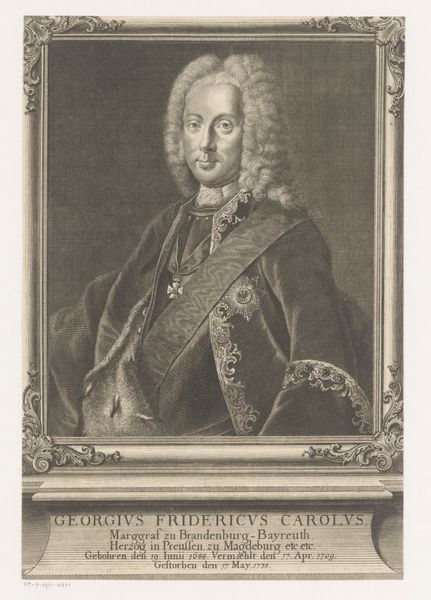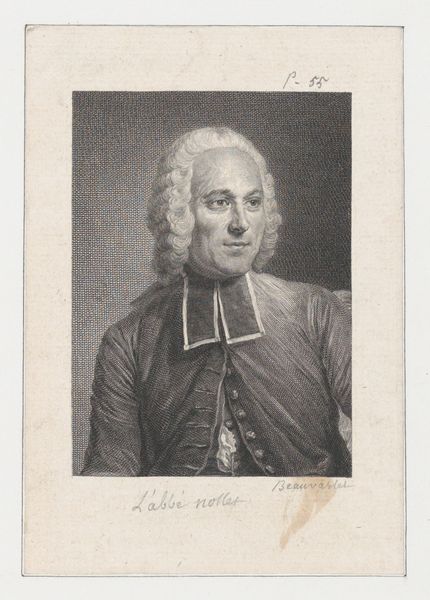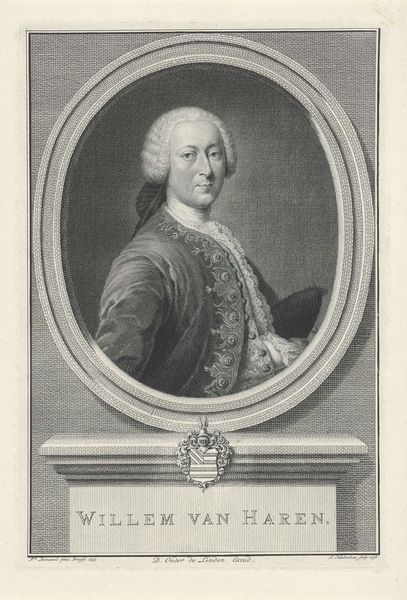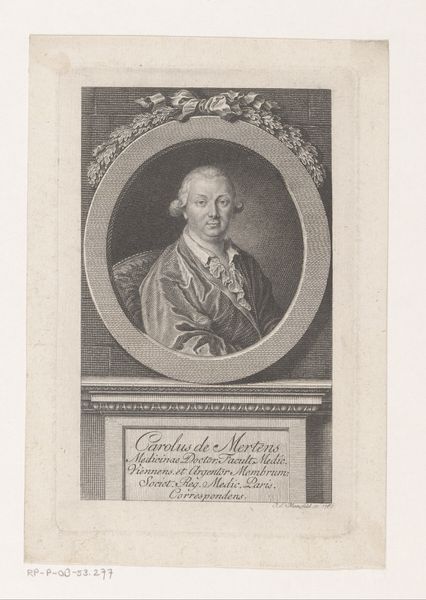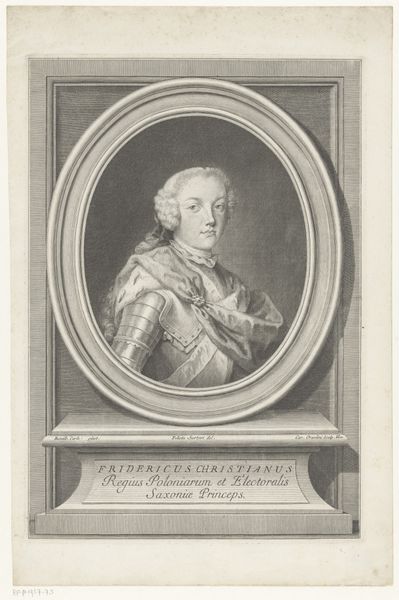
Portret van Carl Theodor Anton Maria von Dalberg 1792 - 1816
0:00
0:00
engraving
#
portrait
#
neoclacissism
#
history-painting
#
engraving
Dimensions: height 218 mm, width 170 mm
Copyright: Rijks Museum: Open Domain
Curator: Here we have Johann Friedrich Wilhelm Müller’s "Portret van Carl Theodor Anton Maria von Dalberg," created between 1792 and 1816. It’s an engraving held here at the Rijksmuseum. Editor: It strikes me as rather austere. The figure, presented in grayscale, has a solid, almost stone-like quality, contained within clearly defined, crisp borders. Curator: Absolutely. Müller employs a neoclassical style here, fitting for a portrait meant to convey the gravitas of a historical figure like Dalberg. Notice the subject’s composed expression, and the carefully rendered details of his clothing and medals. What symbolic meaning might those convey? Editor: The awards and clothing point towards status and societal significance. The subject projects order, with meticulously detailed rendering contributing to his importance as conveyed by geometric patterning and symmetry. The shading evokes power, while reinforcing underlying structures in his face and figure. Curator: Indeed. Dalberg, a significant political and religious figure during the Holy Roman Empire’s final years, sought to maintain its integrity amid rising nationalism. The symbols adorning him communicate his authority, which he surely wanted to project to future generations. Editor: Is it also important how meticulously the engraver represents this order? This could contribute to a more ideal presentation. Do we see him, or rather his legacy? Curator: That’s a sharp observation. The act of immortalization through art carries weight. Portraits often serve to enshrine particular attributes the sitter wants remembered. This engraving could tell us just as much about how Dalberg wanted to be perceived. The cool remove of Neoclassicism supports his desire for control over the interpretation of his life. Editor: Thank you. Thinking through the visual language helps the layers of meaning unfold. Curator: Indeed. A single image, particularly from the past, carries not just aesthetic considerations, but embedded codes about power and societal values.
Comments
No comments
Be the first to comment and join the conversation on the ultimate creative platform.
